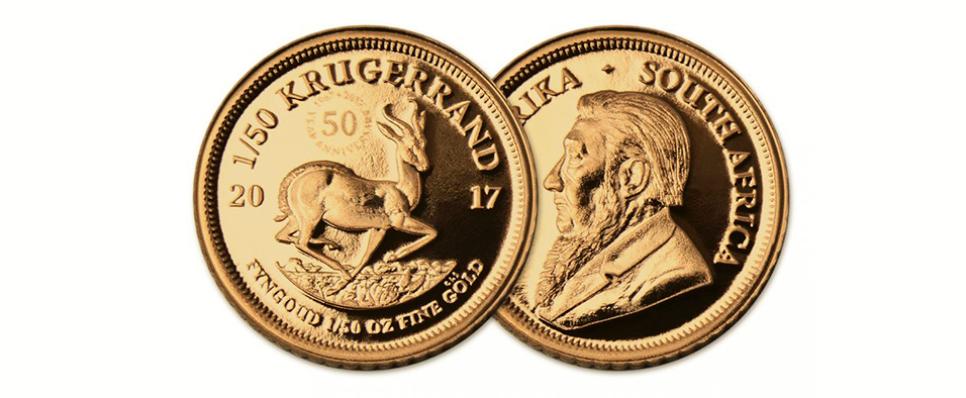Published: 12 Mar 2018
The South African gold coin

South Africa has long been a hotbed for precious metals and gemstones. The country is home to some of the largest gold reserves in the world, and hence, it is no surprise that the South African Government decided to introduce a commemorative gold bullion coin as a national marketing tool. The Krugerrand was introduced in 1967 and for nearly two decades, remained the preeminent coin responsible for the growth of the modern precious metals market.
The Krugerrand gets its name from a pair of words. The first half of the name, Kruger, is the last name of South Africa’s third and most revered president – Paul Kruger. The latter half of the name, Rand, is the name of the country’s national currency. Today, the Kugerrand is available in 4 different sizes (1oz, ½ oz, ¼ oz, and 1/10 oz.), and remains a popular product in the global bullion market. The obverse faces of all Krugerrands have the image of Paul Kruger’s bust inscribed onto the coin. Surrounding his bust are the words “Suid-Afrika” on one side, and “South Africa” on the other, which are the Afrikaans and English spelling of the country’s name. The reverse side of the coin was designed by Coert Steynberg, and showcases the image of a springbok, a native antelope species and the national symbol of South Africa. For all its glory, however, the Krugerrand has no official face value, and it not used as legal tender in the nation. They simply hold status as the official gold bullion of the country.
The South African Kugerrand was the modern world’s first, and hence oldest gold bullion coin - especially one used as an investment tool. The Krugerrand had almost no direct competition, and there was a time the gold bullion accounted for 90% of the gold coin market.
However, the Krugerrand couldn’t sustain its popularity forever. Identifying the opportunity created by the South African Krugerrand, many more countries decided to jump on board the gold bullion train, and introduced their own versions of the gold coin. The introduction of the Canadian Gold Maple Leaf (1979), the Chinese Gold Panda (1982), and the American Gold Eagle (1986) all cut into the Krugerrand’s marketshare.
South Africa is India’s biggest trade partner in all of Africa, and the Kugerrand remains an important commodity in the precious metal industry.











